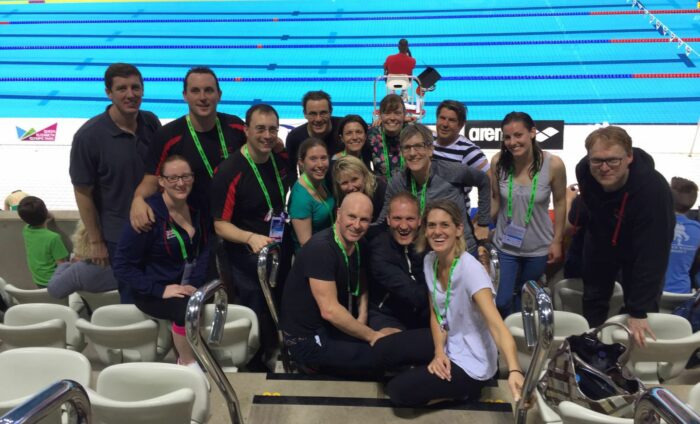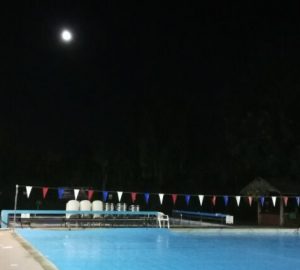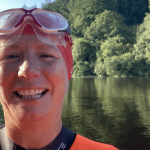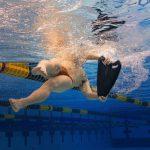
More on the power of pacing
I hope this isn’t beginning to sound repetitive but I want to talk about pacing, again. I have new data to share.
Those of us who are swimming geeks spend a lot of time thinking about what can make us faster. In simple terms, your speed through the water is a function of how fast you move your arms and how much distance you cover with each arm stroke. If you can increase one without harming the other, you will go faster. We therefore look at how we can achieve either or both of these objectives, which primarily comes down to improving technique and fitness.
Possibly as a consequence of this focus, we talk much less about pacing, which is a shame because I think it’s hugely important, especially in longer distances and open water swimming. Even if your technique is flawless and you are extremely fit, you can still produce a poor performance if you mess up your pacing.
But back to the data. Last week I took part in the European Masters Swimming Championships at the Olympic Pool in London. I did three individual events (the most we were allowed to enter): 100m, 200m and 400m freestyle. I’d also competed over these same three distances a few months previously at the South East Regional Masters in Crawley, so I had a good set of benchmark times to aim for.
My first event was the 200m FC. I was lucky enough to be allocated lane four in the main pool and I swam more than three seconds faster than I did at Crawley. The next day was the 400m. Following the 200m result I was so convinced I would beat my previous time that my first reaction when I saw the scoreboard was disbelief. I thought the timing system had gone wrong. I knew my fitness was good and the race felt like it had gone well. So why was I three seconds slower than my previous time and five to seven seconds slower than I thought I could do based on my 200m result?
Was I tired? The European Championships was a big, stressful event and I’d taken part in a relay late the night before. It was a possibility, but the next day, when I was even more tired, I did a good time in the 100m FC and was more than a second faster than my previous outing at that distance, so I don’t think it was fatigue.
The other possible explanation was that we had to swim two per lane for the 400m. Did the anxiety of a possible head-on collision slow me down? Honestly, I don’t think so. While I’d worried about it in advance, I barely registered the other swimmer during the race.
It was only when I looked at the 100m splits, and compared them with my previous race over the distance, that I began to suspect I’d made a mistake with the pacing.
We’re not talking about a spectacular blow up here. If you look at the London splits in isolation, they seem pretty good. You expect a faster first 100m because of the dive and my final 100m was faster than my second (just). It looks like a reasonably well-paced race. But then compare it with my Crawley times.
My first 100m at Crawley was a relatively leisurely 1:12.25 compared to 1:10.62 from London. In London I was therefore 1.63 seconds, or roughly 2.2 metres (more than a body length) ahead after 100m. I swam the second 100m at almost exactly the same pace at both events, so at the half way point, if I’d been racing myself, my Crawley self was still more than 2m behind.
It’s the third 100m when things get more interesting. In London, lengths five and six were 1.5 seconds slower than three and four. In Crawley, the difference was only 0.22s. I was still ahead in London after 300m, but the gap had closed to less than half a second. Crawley Simon had nearly caught London Simon and was about to power past. The final splits from Crawley and London tell their own story. The end result was that in the Crawley race, despite being behind for 300m, I ended up nearly 3s, or almost 4m, ahead.
The feedback I was given at Crawley, from fellow swimmers and a couple of coaches, was that I had started too slowly based on the fact that my final 100m was relatively fast. That is possibly accurate feedback and there may be room for further improvement with a more refined pacing strategy. However, I definitely think I tried to compensate too much in London, and paid the price in the latter part of the race. Finding the optimum pacing strategy is really hard and deserves a similar level of attention to that given to technique and fitness. More practice required!
In long distance open water swims, the consequences of poor pacing judgement will be even more pronounced. However, it’s much more difficult to measure. For anyone interested in swimming faster in open water, as well as working on your technique and fitness, I strongly recommend spending some time in a swimming pool measuring the impact on your overall speed when you adopt different pacing strategies.
Image: Teddington Swimming Club Masters at the Aquatics Centre (I’m hiding in the back row)








